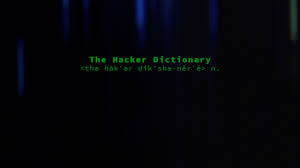Are you new to the realm of hacking?
Do you feel dumb when you don’t know the meaning of a certain term?Well, then this will certainly help you out! . If you are ever unsure about anything, simply scroll down and find that specific word, then read the definition.
Anything includes: Abbreviations, Phrases, Words, and Techniques.*The list is in alphabetical order for convenience!*
Abbreviations
? DDoS = Distributed Denial of Service
? DrDoS = Distributed Reflected Denial of Service Attack, uses a list of reflection servers or other methods such as DNS to spoof an attack to look like it’s coming from multiple ips. Amplification of power in the attack COULD occur.
? FTP =File Transfer Protocol. Used for transferring files over an FTP server.
? FUD = Fully Undetectable
? Hex =In computer science, hexadecimal refers to base-16 numbers. These are numbers that use digits in the range: 0123456789ABCDEF. In the C programming language (as well as Java, JavaScript, C++, and other places), hexadecimal numbers are prefixed by a 0x. In this manner, one can tell that the number 0x80 is equivalent to 128 decimal, not 80 decimal.
? HTTP =Hyper Text Transfer Protocol. The foundation of data communication for the World Wide Web.
? IRC = Internet Relay Chat. Transmiting text messages in real time between online users.
? JDB =Java drive-by, a very commonly used web-based exploit which allows an attacker to download and execute malicious code locally on a slave’s machine through a widely known java vulnerability.
? Malware =Malicious Software
? Nix = Unix based operating system, usually refered to here when refering to DoS’ing.
? POP3 =This is the most popular protocol for picking up e-mail from a server.
? R.A.T = Remote Administration Tool
? SDB = Silent drive-by, using a zero day web-based exploit to hiddenly and un-detectably download and execute malicious code on a slave’s system. (similar to a JDB however no notification or warning is given to the user)
? SE = Social Engineering
? Skid =Script Kid/Script Kiddie
? SMTP =A TCP/IP protocol used in sending and receiving e-mail.
? SQL =Structured Query Language. It’s a programming language, that used to communicate with databases and DBMS. Can go along with a word after it, such as “SQL Injection.”
? SSH =Secure Shell, used to connect to Virtual Private Servers.
? TCP = Transmission Control Protocol, creates connections and exchanges packets of data.
? UDP =User Datagram Protocol, An alternative data transport to TCP used for DNS, Voice over IP, and file sharing.
? VPN =Virtual Private Network
? VPS =Virtual Private Server
? XSS (CSS) = Cross Site Scripting
Words
?Algorithm = A series of steps specifying which actions to take in which order.
?ANSI Bomb = ANSI.SYS key-remapping commands consist of cryptic-looking text that specifies, using ansi numeric codes to redefine keys.
?Back Door = Something a hacker leaves behind on a system in order to be able to get back in at a later time.
?Binary = A numbering system in which there are only two possible values for each digit: 0 and 1.
?Black Hat = A hacker who performs illegal actions to do with hacking online. (Bad guy, per se)
?Blue Hat =A blue hat hacker is someone outside computer security consulting firms who is used to bug test a system prior to its launch, looking for exploits so they can be closed. Microsoft also uses the term BlueHat to represent a series of security briefing events.
?Bot = A piece of malware that connects computer to an attacker commonly using the HTTP or IRC protocal to await malicous instructions.
?Botnet = Computers infected by worms or Trojans and taken over by hackers and brought into networks to send spam, more viruses, or launch denial of service attacks.
?Buffer Overflow = A classic exploit that sends more data than a programmer expects to receive. Buffer overflows are one of the most common programming errors, and the ones most likely to slip through quality assurance testing.
?Cracker = A specific type of hacker who decrypts passwords or breaks software
Kelvin Ace





